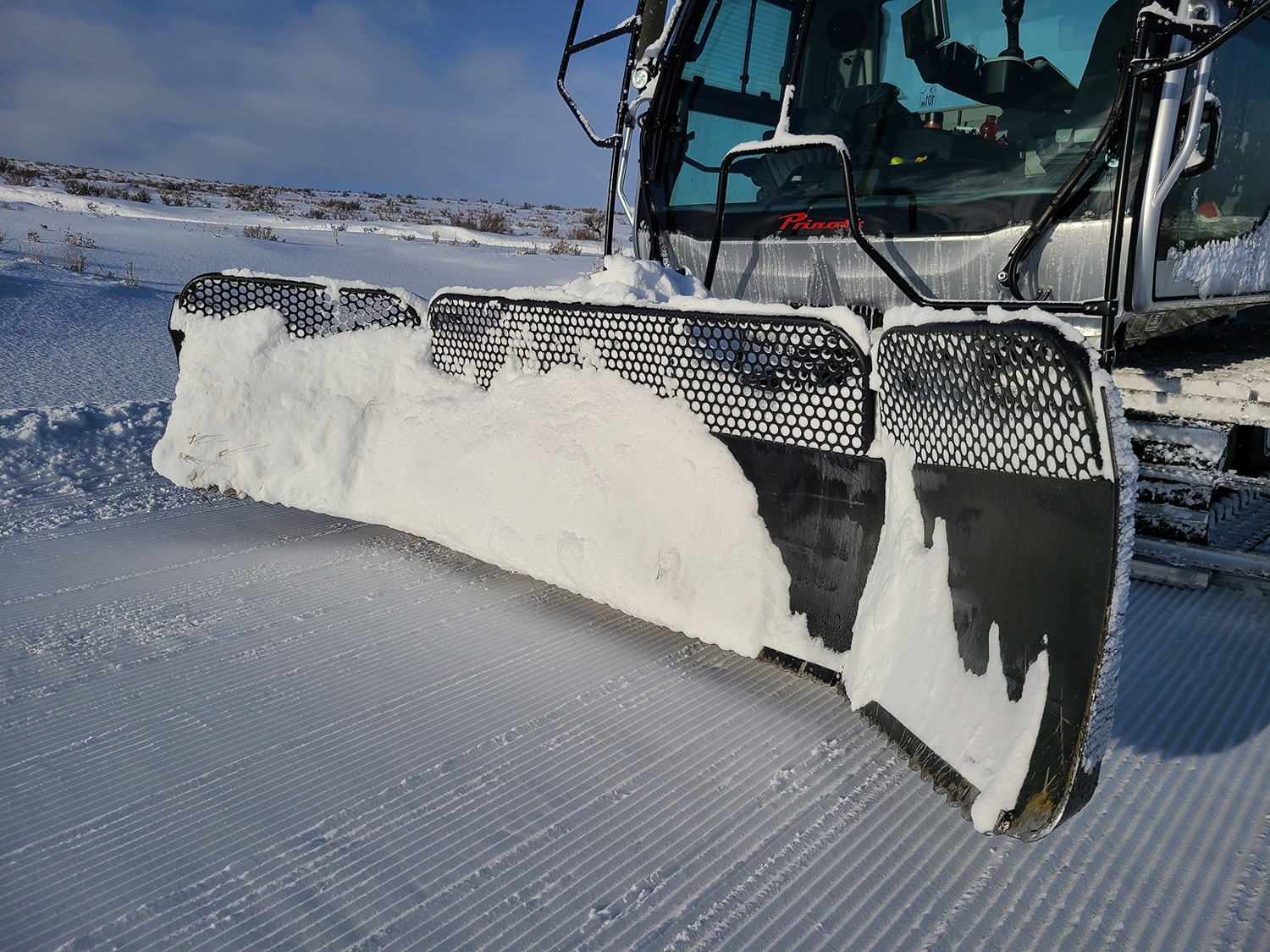THE SNOWCATS OF SAGE PART 2: HOW TO OPERATE A SNOWCAT

One of the things that make our snowmobile trips among the best in Colorado, is our fleet of snowcats and our grooming operation. Here on this 6,000-acre private mountain, we enjoy an incredible trail system of custom-designed snowmobile routes, all maintained for ideal riding conditions.
In case you missed the first part in this series, go check it out here. In this second part, we’re talking with Sage Outdoor Adventures owner and director of operations, Cole Bangert, on what it takes to drive a snowcat.
What’s Happening Behind the Wheel of a Snowcat
If you’ve ever seen snowcats grooming a ski hill, driving up and down the mountain, you might have no idea what goes into operating and maintaining these machines. And it’s probably more than you think!
According to Cole, the blade on the front of the machine is the most crucial part, that is the workhorse of the cat – of course aside from the motor and hydraulic pumps that drive it. But the more you can do with the blade, the better.
“The blade is made to roll snow and introduce heat into the snowpack through the rolling motion,” Cole told us. “Then, the snow passes underneath the tracks that pack the fresh snow downward. Finally, the tiller on the back of the machine reprocesses the snow and the plastic flaps leave the nice corduroy lines that you’re used to seeing on the ski hill. In one pass, going about 8 to 10 miles an hour, you can take a rough road or a very sloppy road, and turn it into a nice and firm, smooth surface.”
How much does a Snowcat Cost
Aside from the initial upfront cost of buying a snowcat, the expense of putting them on the snow is pretty high.
“We estimate that it costs about $400 every time you start and run the snowcat, even if it’s only for an hour,” Cole explained. “Of course the hourly expense goes up the longer that you’re out grooming. If you are grooming a lot, that means there’s tons of snow on the ground and that is a very good feeling. But it’s also a big cost to keep up with.”
Why so expensive to operate? A number of factors drive up the cost. From complicated parts to rough winter conditions, it’s not easy to keep a snowcat on the snow.
“Snowcats are mighty machines in a small package,” Cole added. “They run off diesel motors, usually Mercedes or Cummins diesel motors. And all the new snowcats also have an EPA-required regeneration system on the exhaust that tends to be very problematic.
“What’s more, the hydraulic pumps that power the tiller, the blade, and the drive tracks are extremely temperamental. Even one small droplet of water entering that hydraulic pump system can destroy a $35,000 hydraulic pump.”
Consider the fact that snowcats operate in sub-zero temperatures almost all the time. When you add very cold temperatures, very high pressures, and small moving parts, along with lots of snow and ice, it all adds up to frequent problems.
“Overall though, snowcats are very cool tools,” Cole emphasized. “And honestly, they are quite fun to drive.”
How to Drive a Snowcat
Make no mistake; it takes a very skilled driver. When driving a snowcat, many things are happening all at the same time.
“If you can pat your head and rub your tummy, then you’re a fraction of the way to being able to drive a snowcat,” said Cole. “You’ve got your drive sticks on the left-hand throttle, with your right foot on the windshield wiper and your left foot controlling the blade and tiller operations, while your right hand is on the joystick. And all the while, you’re trying not to run into trees and rocks or get stuck…and don’t forget the big one – trying not to dig holes!”
An easy way to spot a rookie snowcat driver is if you go on a trail that has the feel of a rollercoaster, up and down, up and down.
“It’s important to look ahead, judge your momentum, the snowpack, and snow density,” Cole explained. “You must cut where you need to cut, deposit where you need to deposit, but not overdo it because if you continually dig a hole and then deposit and then dig another hole and deposit, you’re just making one big roller-coaster trail. And it’s very difficult to fix once this has happened.”
It may be complicated. And it’s certainly not easy. But there’s no question that we’re extremely proud of our grooming operations here at Sage. In large part, it’s what makes our private mountain experience a fantastic one for our guests.
If you’d like to learn more about our guided snowmobile trips, please take a few minutes to look through the information on our Snowmobiling Page, and don’t hesitate to contact us with questions. We’d love to help you plan an unforgettable backcountry mountain experience!
